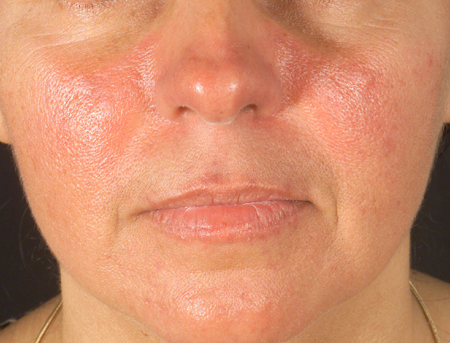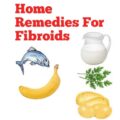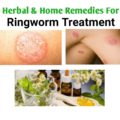Photodermatitis is an abnormal skin reaction to sunlight, or more specifically to ultraviolet (UV) rays. It can be acute (sudden) or chronic (ongoing). Photodermatitis occurs when your immune system reacts to UV rays. You may develop a rash, blisters, or scaly patches. Exposure levels and reactions differ for every person. Several factors can make your skin sensitive to UV rays, including having an inherited tendency to photosensitivity, taking certain medications, or being exposed to plants in the Apiaceal or Umbelliferae family, including weeds and edible plants, such as hogweed, cowbane, carrot, parsnip, dill, fennel, celery, and anise. SEE: Skin Cancer in Australia Compared To Other Countries
Signs and Symptoms of Photodermatitis
Signs of photodermatitis include:
- Itchy bumps, blisters, or raised areas
- Lesions that resemble eczema
- Hyperpigmentation (dark patches on your skin)
- Outbreaks in areas of skin exposed to light
- Pain, redness, and swelling
- Chills, headache, fever, and nausea
- Long-term effects include thickening and scarring of the skin and an increased risk of skin cancer if the cause is genetic.
What Causes Photodermatitis?
Photodermatitis can have several causes, including:
- Diseases, such as lupus or eczema, also make skin sensitive to light
- Genetic or metabolic factors (inherited diseases or conditions, such as pellagra, caused by lack of niacin and vitamin B-3)
- Diseases, such as polymorphic light eruptions, characterized by sensitivity to sunlight
Reactions to chemicals and medications
In reaction to UV rays, certain chemicals and drugs can cause sunburn, an eczema-like reaction, or hives. The reaction may be related to an allergy, or it may be a direct toxic effect from the substance. Below are examples of substances or circumstances that may trigger one or the other type of reaction:
Direct toxic effect:
- Antibiotics, such as tetracycline and sulfonamides
- Antifungals, such as griseofulvin
- Coal tar derivatives and psoralens used topically for psoriasis
- Retinoids, such as tretinoin and medications containing retinoic acid, used for acne
- Nonsteroidal anti-inflammatory drugs (NSAIDs)
- Chemotherapy agents
- Sulfonylureas, oral medications used for diabetes
- Antimalarial drugs, such as quinine and other medications, used to treat malaria
- Diuretics
- Antidepressants, such as the tricyclics, used for depression
- Antipsychotics, such as phenothiazines
- Anti-anxiety medications, such as benzodiazepines
Allergic reactions:
- Fragrances
- Sunscreens with PABA
- Industrial cleaners that contain salicylanilide
- Lavender
Who Is Most At Risk?
People who are most at risk include: People with fair to light skin, or those with red or blond hair and green or blue eyes, tend to be most sensitive, regardless of their racial or ethnic background. This is categorized as skin type I (the frequency of photodermatitis in African Americans is similar to that in Caucasians).
People with lupus, porphyria, or polymorphous light eruptions
People with exposure to UV rays for 30 minutes to several hours increases risk (especially in spring and summer), as does exposure between 11 a.m. to 2 p.m. (50% of UV radiation is emitted during this time).
10 Photodermatitis Home Remedies You Should Try
If you do not get enough of some nutrients, your skin can become sensitive to sunlight. Pellagra, for example, is caused by a niacin deficiency and leads to photosensitivity. Other nutrients, particularly antioxidants and flavonoids, may help protect skin against sun damage in healthy people. Antioxidants help protect the skin from damage. Recent studies suggest that antioxidants, especially beta-carotene, may help lessen the symptoms of photodermatitis. Home remedies include:
1. Essential Oils
a. Tea Tree Oil
You Will Need
- 10 drops of tea tree oil
- 30 mL of coconut or olive oil
What You Have To Do
- Add 10 drops of tea tree oil to 30 ml of coconut oil and mix well.
- Apply the mixture to the affected area and allow it to dry.
How Often You Should Do This
You must do this once daily.
Why This Works
The anti-inflammatory properties of tea tree oil are soothing and provide instant relief from the pain and itchiness associated with sun poisoning. The antimicrobial properties of tea tree oil help prevent further infection in the affected area.
2. Vitamins
Vitamins C, D, and E are a few vitamins that can help in treating sun poisoning. Vitamin C has strong antioxidant properties that can protect your skin from the harmful sun rays, both internally and externally. Vitamin E works well in combination with vitamin C and offers quick relief from sunburns as well. However, do not use it as a sunscreen because it tends to absorb the sun rays. Vitamin D is also a great option for lessening the risks of sunburn. You can consume more citrus fruits, leafy vegetables, meat, seafood, whole grains, soy products, cheese, and eggs to get enough of the above vitamins.
3. Apple Cider Vinegar
You Will Need
- 1 tablespoon of apple cider vinegar
- 1 cup of water
- Cotton pads
What You Have To Do
- Add a tablespoon of apple cider vinegar to a glass of water and mix well.
- Soak a cotton pad in this mixture and apply it directly to the sunburns.
- Leave it on for 15 to 20 minutes before washing it off with plain water.
How Often You Should Do This
Do this 1 to 2 times daily.
Why This Works
Apple cider vinegar has powerful anti-inflammatory properties that can help in soothing and cooling your inflamed and itchy skin, thus speeding your recovery from sun poisoning.
4. Coconut Oil
You Will Need
Coconut oil (as required)
What You Have To Do
- Take some coconut oil and apply it directly to the sunburned area.
- Leave it on for 30 to 60 minutes before washing off.
How Often You Should Do This
You must do this 1 to 2 times daily.
Why This Works
Coconut oil is a multipurpose oil that exhibits impressive anti-inflammatory and analgesic properties. These properties help relieve the pain and blistering that occur due to sun poisoning.
5. Baking Soda
You Will Need
- 1 tablespoon of baking soda
- Water (as required)
What You Have To Do
- Take a tablespoon of baking soda and add a little water to it to form a paste.
- Apply the mixture to the affected areas.
- Once the paste dries, wash it off with lukewarm water.
How Often You Should Do This
You must do this multiple times on a daily basis until you see an improvement in your condition.
Why This Works
Sun poisoning disturbs the pH of your skin. The alkaline nature of baking soda can help restore the pH of your sunburned skin, thus speeding its recovery.
6. Epsom Salt Bath
You Will Need
- 1 cup of Epsom salt
- Water
What You Have To Do
- Add a cup of Epsom salt to a tub of water.
- Once the salt dissolves, soak in the water for 25 to 30 minutes.
How Often You Should Do This
Do this once daily until you recover completely.
Why This Works
The presence of magnesium makes Epsom salt a powerful anti-inflammatory agent that helps you recover faster from sun poisoning by treating its symptoms.
7. Aloe Vera
You Will Need
Aloe gel (as required)
What You Have To Do
- Scrape out some aloe gel from the aloe leaf.
- Apply the gel evenly to the affected area.
- Leave it on for 20 to 30 minutes before washing it off with water.
How Often You Should Do This
You must do this 3 to 4 times daily.
Why This Works
Aloe vera possesses powerful anti-inflammatory properties that soothe your skin and help it heal faster. The wound-healing activities of aloe vera are beneficial in healing the blisters and burns associated with sun poisoning.
8. Oatmeal Bath
You Will Need
- 1-2 cups of oatmeal
- Water
What You Have To Do
- Add a cup or two of oatmeal to a tub of water.
- Soak in the water and gently place some oatmeal on the affected area.
- Relax in the water for 20 to 30 minutes.
How Often You Should Do This
You must do this once daily until your condition improves.
Why This Works
Oatmeal is another great remedy for treating sun poisoning. It has anti-inflammatory properties that work wonders in relieving inflamed, itchy, and peeling skin.
9. Green Tea Bags
You Will Need
Used green tea bags
What You Have To Do
- Refrigerate the used green tea bags for an hour.
- Apply a cold tea bag to the affected area and leave it on for 30 minutes or so.
How Often You Should Do This
Do this multiple times daily for optimum benefits.
Why This Works
Green tea is rich in antioxidants due to the presence of polyphenols in it. The anti-inflammatory properties of green tea help revive damaged skin and treat blisters and peeling skin.
10. Honey
You Will Need
Honey (as required)
What You Have To Do
- Take some honey and apply it evenly to the affected areas.
- Leave it on for 20 to 30 minutes before washing off with cold water.
How Often You Should Do This
Do this at least thrice daily.
SEE:8 Major Side Effects Of Skin of Bleaching Products You Should Know






